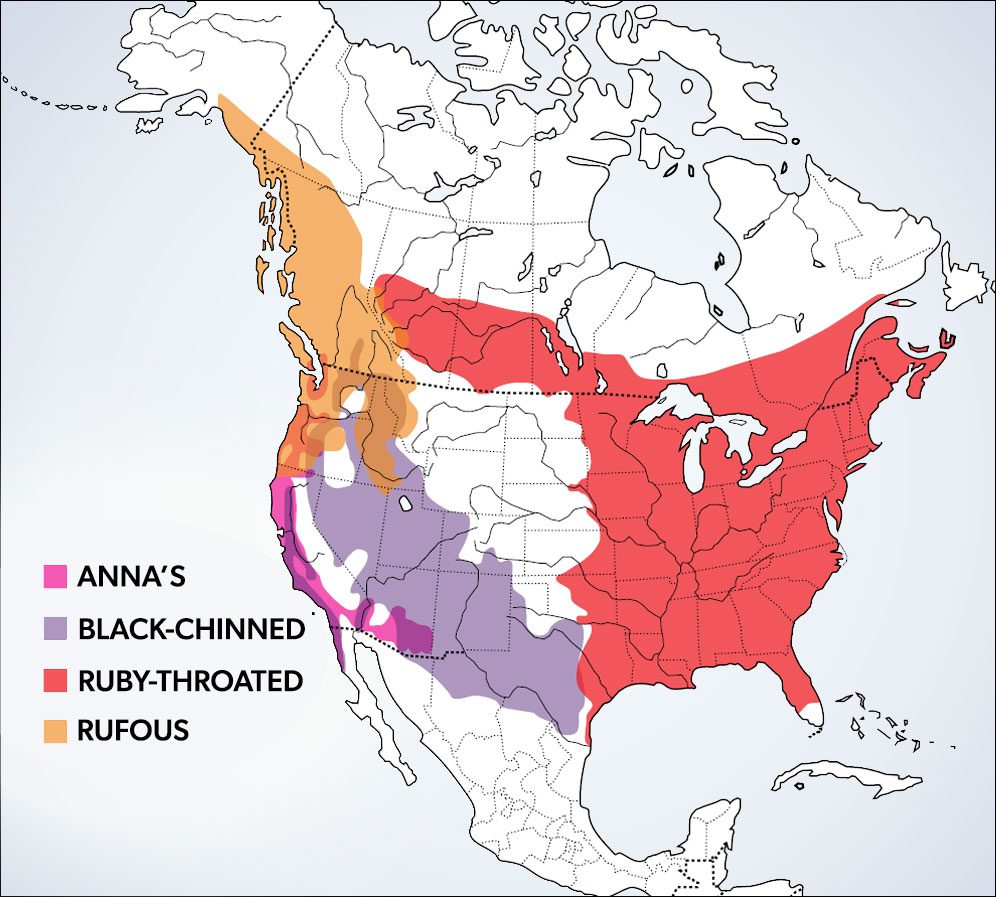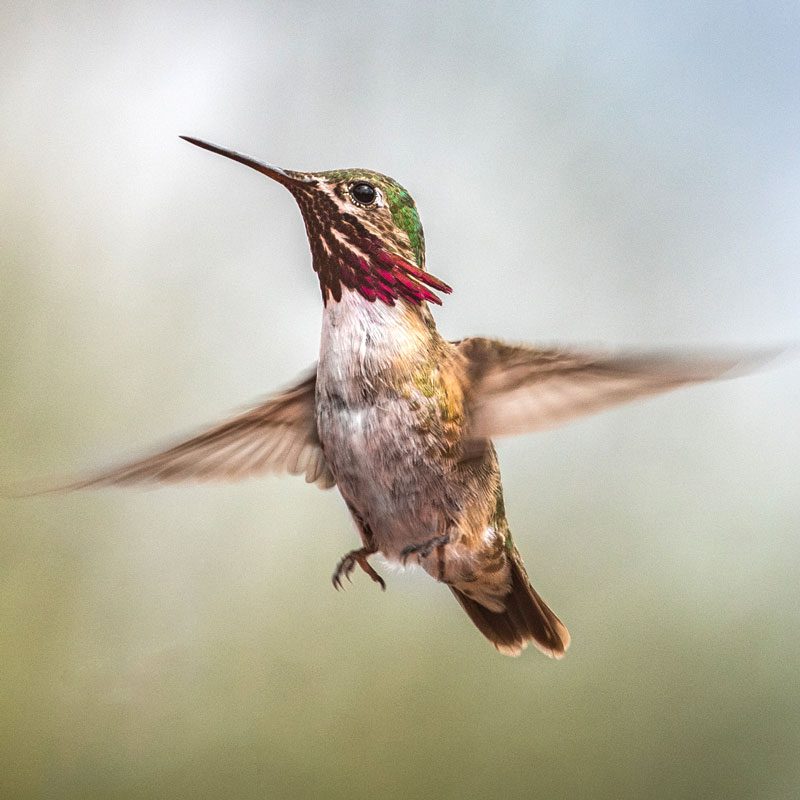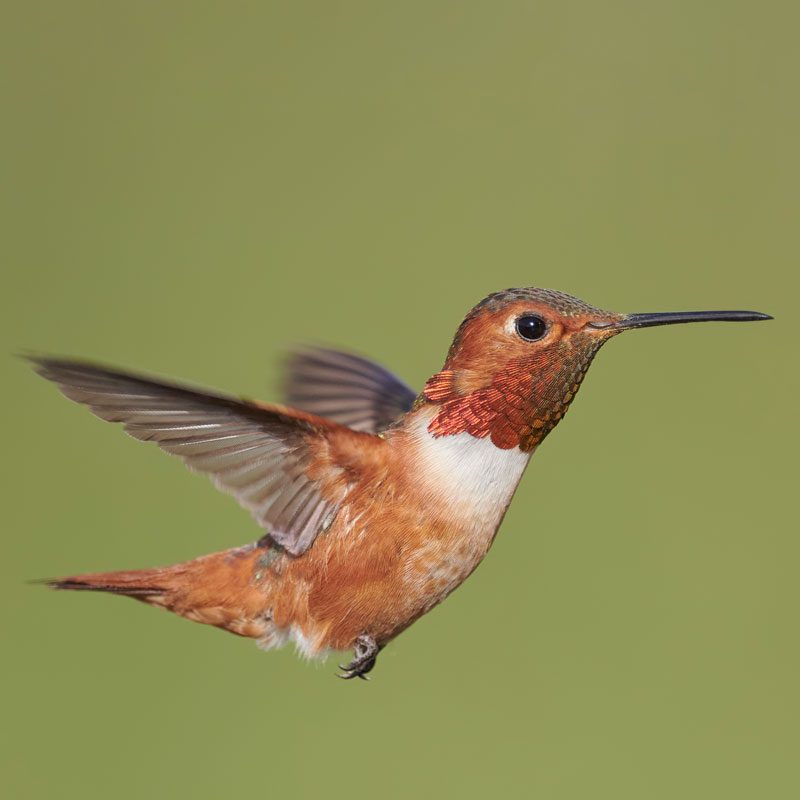
Originally published July 2014; updated May 2024.


Hummingbirds are special. They’re brilliant, tiny, precision-flying creatures that glitter like jewels in the sun and dazzle with their aerial acrobatics. They’re glorious to watch, flying fast, stopping instantly, hovering, and zipping up, down, or backwards with exquisite control.
Hummingbirds live only in the Americas. They have a unique shoulder anatomy that enables them to beat their wings in a figure-eight pattern, creating lift on both up and down strokes. This skill coupled with the ability to beat their wings more than 3,000 times per minute is what enables their precision aerobatics. Some early European naturalists, on encountering hummingbirds for the first time, wondered if they were a cross between a bird and an insect.
More than a dozen species of hummingbirds regularly summer in the United States. Canada is home to 5 species, while Mexico has about 60 species. All in all, there are more than 360 hummingbird species in the world.
Watch for These 9 Hummingbird Species
If you’re in the U.S. or Canada and looking for hummingbirds, these nine are the most widespread and commonly seen:


Rufous Hummingbirds are small, feisty, and not shy about chasing off larger hummingbirds. They breed the farthest north of any hummingbird, yet their 4,000-mile migration to Mexico is possibly the longest migration relative to body size of any bird. More about Rufous Hummingbirds.


Calliope Hummingbirds are the smallest bird in the U.S. and Canada, yet they migrate more than 2,000 miles each way from chilly Northwestern mountains to pine-oak forests of Mexico. Males have brilliant magenta stripes along the throat and dance for females in high-speed, U-shaped courtship dives. More about Calliope Hummingbirds.


Allen’s Hummingbirds are lookalike cousins to the Rufous Hummingbird, with an affinity for the fragrant coastal scrub and chaparral of California and Oregon. Males fly elaborate courtship displays, though as with most hummingbird species, the males don’t help raise the young. More about Allen’s Hummingbirds.
More Scintillating Species from the Southwestern U.S.
If you’re lucky enough to live in—or to visit—southern Arizona, New Mexico, or Texas, the list of potential hummingbirds nearly doubles. This area is undoubtedly the hummingbird hotspot of the U.S.—a must-visit location if you want to be dazzled by the sight of a busy feeder garden. Regulars include Blue-throated Mountain-gem and Broad-billed, Lucifer, Rivoli’s, and Violet-crowned Hummingbirds, among others.
The Secret of their sparkle: how iridescence works
It’s the mind-bending diversity of the hummingbird color palette that really sets the family apart from other birds. As a group, hummingbirds are more colorful than all other bird species put together, according to a 2022 study. That includes searing magentas, shimmering purple-and-green, night-sky violets, and iridescent rainbows that even incorporate ultraviolet colors humans can’t see.
The dazzling colors are created not by pigments but by precisely sized, perfectly arranged, microscopic bubbles in the structure of the hummingbirds’ feathers. It’s the same general process that gives blue to birds like California Scrub-Jays and a rainbow sheen to birds like Common Grackles. But in hummingbirds the structural colors take the complexity to another level, allowing the birds to create fiery jolts of color when the feathers are turned to just the right angle. For an illustrated explanation of how this works in detail, see What Is the Essence of Iridescence? (Living Bird Summer 2023).
With 360+ Species, There Are So Many More Hummingbirds to Meet
We’ve highlighted barely more than a dozen species of hummingbirds so far—there are hundreds more species to discover. And though the above species are familiar to many birders in North America, it’s no secret that Central and South America take top honors when it comes to dazzling hummingbirds, with at least 60 species in Panama and well over 100 species in each of Colombia, Peru, and Ecuador.
For a deeper dive into this fascinating bird family, try our Bird Academy course The Wonderful World of Hummingbirds. You’ll uncover not just the diversity but also the varied lifestyles, breathtaking behavior, and high-performance energetics of these feathered jewels—and even get some suggestions on how to make your surroundings hummingbird friendly.

